Important lessons from a car guy who can’t afford to take risks
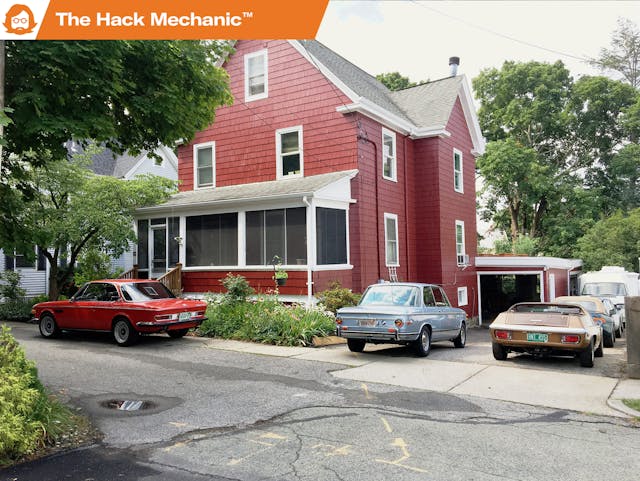
If you’ve been reading this space for some time, you probably have gleaned that my unhinged Hack Mechanic persona is not the only thing bubbling inside my cranium. Underneath I’m actually a very rational, deliberative guy who really tries to think things through, not make decisions or take on risks he’s going to regret, and if he does, at least learn the lesson so it’s less likely to happen again. I thought that this week I’d highlight five vehicles where I leaped and wound up in trouble, and disclose what the lessons learned were.
1999 BMW 528iT Sport Wagon
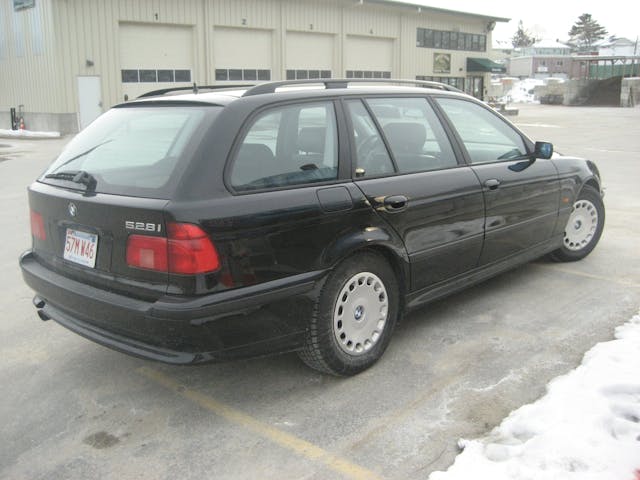
We like what we like. I like rear wheel-drive cars. Having front wheels that steer and deliver power never feels quite right to me, even with cars where the long-standing torque steer problem has been solved. Rear wheel-drive BMWs have been my daily-driver jam for 40 years. About 10 years ago, it made sense to me to move to an E39-body 5 Series wagon. I found one locally with about 150,000 miles on it. It was black with a black interior, and it had the rare combination of the five-speed manual box and the sport package that slightly hunkered-down the car. Initially I loved it, but it turned out to be one of these cars whose purchase puts you on the repair-of-the-week plan without your knowing it. And on this car, it wasn’t just the usual parade of cooling system, fuel delivery, and charging problems. Nor was it having to rebuild the cool-but-troublesome self-leveling rear suspension, as it’s a known trouble spot. In addition to all that, weird things broke. In frigid weather, the oil separator froze and nearly hydro-locked the engine. A front coil spring broke and punctured the tire. Simply getting the rear hatch to work reliably was a battle. As Rosanne Rosannadanna said on Saturday Night Live, it was always something. I was relieved when I sold it.
Lessons learned: The car’s constant neediness made me realize that it was actually an enthusiast car when I needed it to be something more pedestrian. It was from this I learned not to confuse your daily driver and your project cars.
1972 BMW 2002tii

In 2016, when my long-time engineering career ended, I became obsessed with the idea of buying a dead car in some far-flung corner of the country, swooping in, getting it running, and road-tripping it home. It needed to be a car that I knew well, so a BMW 2002 made the most sense. But the more I thought about it, the more I realized that this romantic image of casting all caution to the wind and pitting man against machine and road wasn’t practical. I mean, how exactly are you going to do it? Show up at the seller’s house with a toolbox, a tent, and a sleeping bag and say, “I’m going to camp out here until I get this running and oh, can I use your shower for a week?” At a minimum, the car either needs to be capable of driving off the seller’s property, or you need to tow it a friend or relative’s house where you can do at least the first level of repair and sorting. I did the latter, buying the decade-dead 2002tii sight unseen and accepting an invitation from a guy I’d met once for 10 minutes at a BMW event to stay with him and his wife and wrench on the car in his pole barn. In addition, this fellow scoped out the car for me and gave me a heads-up on what some of its needs were, enabling me to go down there in a rented SUV with parts and tools. (If you’re curious, I wrote about the whole adventure in my book Ran When Parked.)
Lessons learned: You can do this kind of thing, but you really need to have eyes on the car first, come prepared, and then be absolutely merciless in your delineation of what’s truly required to get the car home versus what can wait until you’re in the comfort of your own garage. Otherwise you’ll be on the road for a month.
1976 BMW 2002
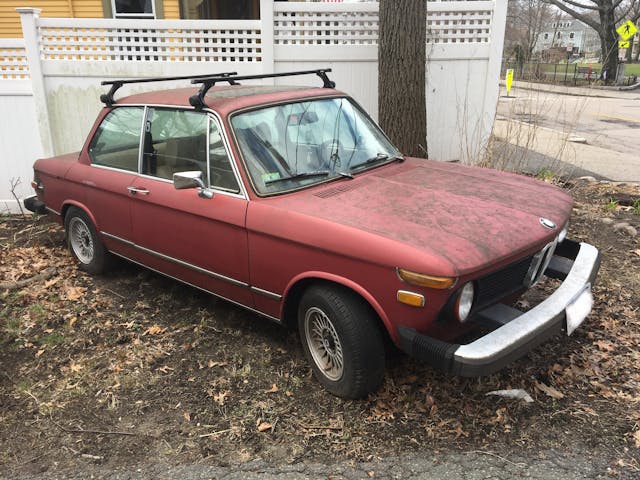
A close friend let me know of a mutual acquaintance one town over from me (in Massachusetts) who was selling his ran-when-parked BMW 2002 due to an impending home renovation project. I contacted the fellow, went over and had a look, was surprised and impressed at the car’s nearly rust-free condition. I got it running with a jump start and starting fluid, made a low cash-on-the-table offer, and bought it. I was positively giddy at my being at the right place at the right time. However, when I drove it home a few days later, the car exhibited an alarming amount of engine noise above around 2500 rpm. Poking around with a mechanic’s stethoscope revealed the noise coming from the oil pan. When I dropped the pan, sure enough, the rod bearings were shot.
Lessons learned: Replacing the rod bearings wasn’t difficult or expensive, and I did fine in the resurrection and re-sale of the car. But while it is well-known that if you can’t test-drive a car, anything can be wrong with it and you won’t know, it was a reminder that hearing an engine run isn’t the same thing as a test drive.
1974 Lotus Europa Twin Cam Special
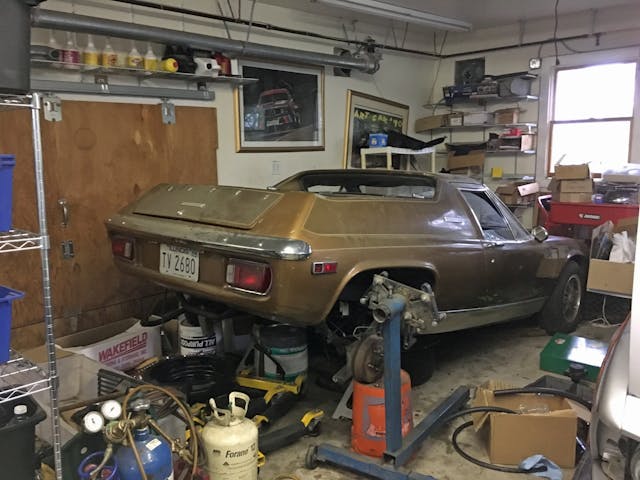
I’ve written quite a bit about the Lotus in this space. When I was in junior high school, I worked for a guy who owned one—it was the first exotic, impossibly low, and angular car that I saw in person, and it hit me right in that special adolescent automotive place. I bought this one sight unseen in 2013 in Chicago; it had 23K on the odometer, but it had been dead since 1979, with an engine that had seized from sitting. I’d revived many dead BMWs but knew nothing about old Lotuses, and this odd, 1600-pound British thing with an engine that had a Ford block and a boutique Lotus head was way more troublesome to resurrect than I’d ever imagined. Even once I got the engine rebuilt, installed, and running, the steps from there to get the car moving, then driving around the block, then driving on the highway, then behaving well enough that I felt I could explore its Lotus-ness, were all waaaaay bigger than in the vintage BMW world I was familiar with. Still, the amount of pleasure I get out of this crazy little thing seems barely legal. (See The Lotus Chronicles for more detail.)
Lessons learned: Oh, many. First, stepping outside your zone of expertise is exciting, but very time consuming. Second, if the goal is to make a Lotus handle like a Lotus is supposed to, that’s a far tougher goal than simply limping it a few miles to a Cars and Coffee. It’s going to cost whatever it’s going to cost, and once you’re in pursuit of that goal, it’s really difficult to shut off the spending tap. Third, even though everyone tells you not to, I did add up the costs, and I’ve got over 20 grand in the car, which is well in excess of what it’s worth. I’m usually not one to do the “underwater” calculation, but it’s important knowing that if I find another basket-case Lotus, it’d cost me similar to get it to the point where it performs like a Lotus should.
1996 Winnebago Rialta
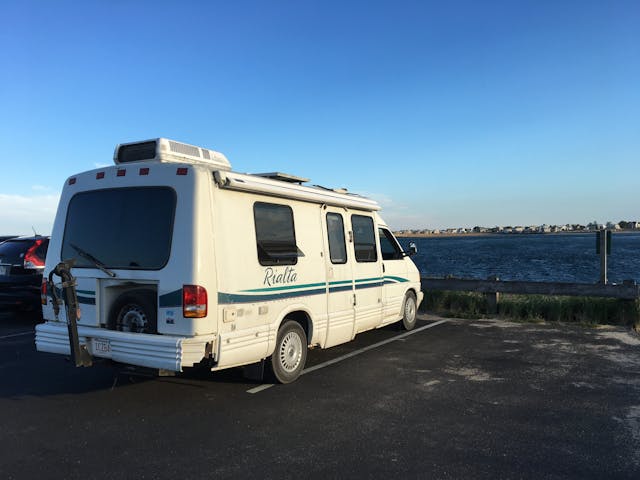
My wife and I used to take the family on beach vacations every summer, for which I’d typically buy a beat-up Suburban and use it as a beach assault vehicle. When the kids fledged and that ended, I floated the idea of buying a small RV, something just slightly larger than the VW campers we had when we were younger. Our middle son lives in Santa Fe, and the idea of road-tripping out there and taking in some national parks on the way was appealing. I wanted something small, parkable, and fuel-efficient, and the used Sprinter-based RVs were all way too expensive. I learned about the Winnebago Rialta—the Volkswagen Eurovan conversion that’s sort of a Westfalia camper on steroids, with a bathroom and a real bed. Even as 25-year-old vehicles, the Rialtas with the VR6 engine are pricey, but the 1995 and ’96 vehicles with the 110-horsepower, five-cylinder Audi engine are more affordable, and when I found a needy one for crapcan Celica money, I jumped on it. Unfortunately, with a 110-hp engine in a 7000-pound vehicle, they’re as slow as the VW campers of yore. For this reason, we’ve never taken it on a big road trip, as I’m sure that on the big western hill climbs we’d be doing 35 mph in the right lane. Instead, we use it for weekends on Cape Cod, where state campgrounds are about $40 a night. There’s been a steady cavalcade of plumbing and electrical issues, but even the beach use notwithstanding, as we’re both now in our 60s, owning a vehicle with a bathroom in it is awesome.
Lessons learned: Bargain RVs have all of the problems of a car and a house, and if you’re traveling with your spouse, it becomes not just your tolerance for imperfection, but theirs as well. Fortunately my wife rolls with it. Due to the Rialta being both too under-powered and a bit too small, I doubt we’ll ever do a real road trip in it, but I don’t think I could’ve learned that lesson without owning it. In that way, it’s been a great starter RV.
As Mark Twain said, “Good decisions come from experience. Experience comes from making bad decisions.” I don’t really think any of these decisions were bad, but I really do try to learn from them nonetheless. I don’t believe that Bob Dylan is a car guy, but I think of his line “And here I sit so patiently / waiting to find out what price / you have to pay to get out of / going through all these things twice” and think he’d be right at home with us.
***
Check out the Hagerty Media homepage so you don’t miss a single story, or better yet, bookmark it. To get our best stories delivered right to your inbox, subscribe to our newsletters.


Knowing your limitations as a Mechanic, Financially and facing the reality of a car that can it really be saved or will it always be a basket case,
Working on cars is not just for the smart but the wise too. Smarts is what helps you fix something. Wisdom is what tells you if the juice wortht he squeeze.
I have seen some very smart people who have wasted money on senseless and useless cars. One was a very good engineer. He has a lot of influence in my life on working to find how things work and to fix them. Odds are you have used several appliances he designed and engineered.
He would make me recordings of F1 cars and try to teach me how to tell them by the sound. Yes he was that good. But when it came to car projects he would chose a basket case and it would never get done. His 50’s Benz was not even a good parts car and it never left the garage., he then bought one of the first Honda Cars to come to America. It too never left the garage. Just as well I am not sure he would have fit in it as he was very tall.
Wisdom seek it and learn it as it can save even the best of us money and grief.
The Bible says that wisdom & understanding is more precious than gold & silver, applies to life and cars as well!!
Oof, this hits awful close to home. As close as my It’s-not-that-rusty-right? Thunderbird that’s been sitting in my garage for a year and half, actually.
What about the bmw 3.0 cs out front
I’ve written several piece about the ’73 E9 3.0CSi. A link to one of them is below. I guess the big lesson is that while I say “Never restore a car, it’s a sucker’s game,” the trick is going back in time 36 years when bodywork and paint weren’t so expensive. Buy what fits your budget, put your sweat equity into it, and space the timeline out to where you can afford it. Don’t chase perfection. Don’t wait for the perfect car only to see the prices spiral out of sight.
https://www.hagerty.com/media/opinion/the-hack-mechanic/the-37-year-long-rolling-resto-of-my-bmw-3-0csi/
This is my approach to my ’86 300SDL. It has provenance and sentimental value (friend’s parents owned it, rode in it through high school).
So despite it having gacked paint and 313,000mi on the odometer, it’s rust-free (rare here in Ontario, Canada) and was well cared for/documented. (owner is a now-retired aircraft engineer)
As I am not independently wealthy and the USD vs. CAD currency battle is not in my favour, I’ve classified it as a rolling restoration.
Every year it gets a little better as I sort out everything. Paint is last on the list. I love a shiny car, but I’d rather have a perfectly working car that I WANT to drive with bad paint, than a shiny basket case.
This is why I grabbed a 1996 Miata for a great price. It needed some TLC but was rust free and ran. I knew all its issues were easy and cheap to fix. When My wife saw it she started giving me the what for about the costs and the ins. then I told her it would cost $13.50 a month to ins through Hagerty and she almost fell over! I think I have about $1,000 in parts in it and I have run out of things to fix! I love this car I figure Ill get another 27 years out of it with just gas and oil changes! Its an absolute hoot to drive with the new Koni SA shocks. Yes some times you can have your cake and eat it too.
A buddy of mine wanted to do the road trip out, fix up a car (in this case an old Ford truck), and drive it back. He requested my mechanical expertise on this mission, and I was a firm ‘NO’. He relented and had the truck delivered. On arrival, it was fairly clear from the rodent nesting material under the valve covers (yes you read that right) that this was never going to have happened. He ended up trying to make one truck out of two, and sold both, in pieces, at a considerable loss.
Very good summary of near wins, near losses. The most important point, and as someone previously quoted Harry Calahan already said, a person has to know their limitations. Rob when you stray from 2002’s it is like my husband straying from his beloved 1975-76 full size GM you and he experience more near losses. Lesson learned more imprint then lessons not learned. Best and Happy Holidays
You feel lucky, mechanic?
Well do ya, punk?
Was that five rust holes, or six? Frankly in all the excitement, I kinda lost count myself
“I’ve got to know.”
But being this is a 220 mig welder, the most powerful fire starter in the world, and would blow your rusty fender clean off
Don’t “confuse your daily driver and your project cars.”
Similarly, don’t ever use any of your project cars, even if you don’t think they aren’t projects, if you really need to be somewhere. You have to learn the art of a pointless pleasure drive. And in tandem, the responsibility of having to drive all your cars regularly even if you don’t want to, or don’t have time, just to keep them running.
“if the goal is to make a Lotus handle like a Lotus is supposed to, that’s a far tougher goal than simply limping it a few miles to a Cars and Coffee. It’s going to cost whatever it’s going to cost, and once you’re in pursuit of that goal, it’s really difficult to shut off the spending tap.”
Yep, and if you’re trying to get a car back to where you know it can be based on your memory, whether that be from your own driving and ownership 30 years ago of the same exact model, or someone else’s, your purchase will be tray you and your wallet insanity. Reliability 30 years ago does not account for all of the parts that have disappeared, and all of the things that went bad in the modern era that never went bad when these were on the street.
This is great advice. In Rob’s place I would have had a few hundred hours of time put into finding a turbo kit for the five cylinder Audis before the first trip to the beach in the Rialta.
Yeah, don’t do that :^)
There was a guy that reworked a couple of Rialtas with Buick V6 drivetrains which made them pretty decent vehicles. My family was a little too big for one so I held off.
I know a friend that tried to drive a 70’s ford truck home from a couple of states over that ended up leaving it on the side of the road. The rust at the front edge of the roof allowed the roof to start peeling back as he drove, so he wrapped a strap around it to keep it in place better. It went downhill from there, and he was either not technically savvy enough or just got fed up and left it for the wolves.
Rob you had some biggies if you thought that a petrol engined BMW with 150,000 miles on the clock was a good idea. If it were a diesel I would say that mileage would be low as I sold my 320d with 247,000 miles on the clock and it had never had a breakdown, only day to day commuter use and regular servicing, but a petrol engine? I would have run a mile as in hindsight, I’m sure you wish you had done.
Ah yes the e39 wagon-the best car and the worst car all in one. Stranded youngest son on his way to the Pentagon at 6AM-frozen oil separator caused any number of future problems over two years (three strandings and a a number of calls for roadside assistance) it went to a new owner. When you drove it and thought “what a great car” something else would break
Yup, mine was like that. Surprisingly my E39 2003 530i stick sport that I’ve daily-driven has been great, and it has even more miles on it. Part of it is that it’s not a wagon, and part is, I think, that being built at the end of the model run, it had the benefit of some bugs being fixed.
“The (Pen)Ultimate Driving Machine”
Let’s just admit it you are a glutton for punishment! Interesting choices all around.
My biggest mistake was getting enamored with a “rust-free” Opel GT. I viewed it in a poorly lit warehouse where all looked as described. The seller even offered to deliver it. Once at home I learned my expensive lesson. You can’t trust everyone, especially when you purchase a car from an autobody/paint shop. At least the paint looks good (except where the rust has started to reappear) Lesson learned.
I once bought a ‘restored’ Alfa Romeo Spider on eBay, which is pretty much like buying a car sight unseen. The plan was to fly in to Dallas, and drive the car home to Asheville, NC. First day was great, spent the night in Memphis. Second day, I’m going up the Appalachian foothills past Knoxville, and the clutch starts slipping, on I-40 still hours away from home. I started to question my sanity/wisdom/intelligence as I was barely going 45 and the big rigs were blasting by. Hit the NC border and it’s mostly downhill from there, breathed a sigh of relief. I made it home, barely.
I like reading your columns about foreign car issues, they always make my domestic car problems seem small and inexpensive. I respect your efforts and choices but count myself lucky I don’t have the same taste in exotics.
I hear you. When I had the Suburban and needed to run to Autozone at 7pm on a Sunday for a caliper and it was like forty bucks, I thought “Geez, I could get used to THIS!”
I can remember going to a mt airy auction 20 plus years ago and picking up an ’80 Concord with a iron duke with a 4 speed for $300.
On the trip back to ohio, I had an issue with the right front brake. Fortunately I had a toolbox with what I needed to fix it.
It was a blast to drive down the windy roads and got decent mileage. The girlfriend following me in my 88 v8 t-bird couldn’t keep up!
The car later developed a problem with the firewall flexing under the clutch cylinder, so it needed to go before it became a money pit. It was ugly but fun!
Bought a used 1976 Lancia , 2 door sports model, in the eighty’s & the A/C failed before I got it home. Turned out to be a bad connection in the dash panel control but took two weeks to find the problem. When it came time to change the oil, found out someone had put the wrong oil filter on it and you had to disconnect the engine mounts, jack up the engine to get enough clearance to remove the filter. Car up for sale after that.